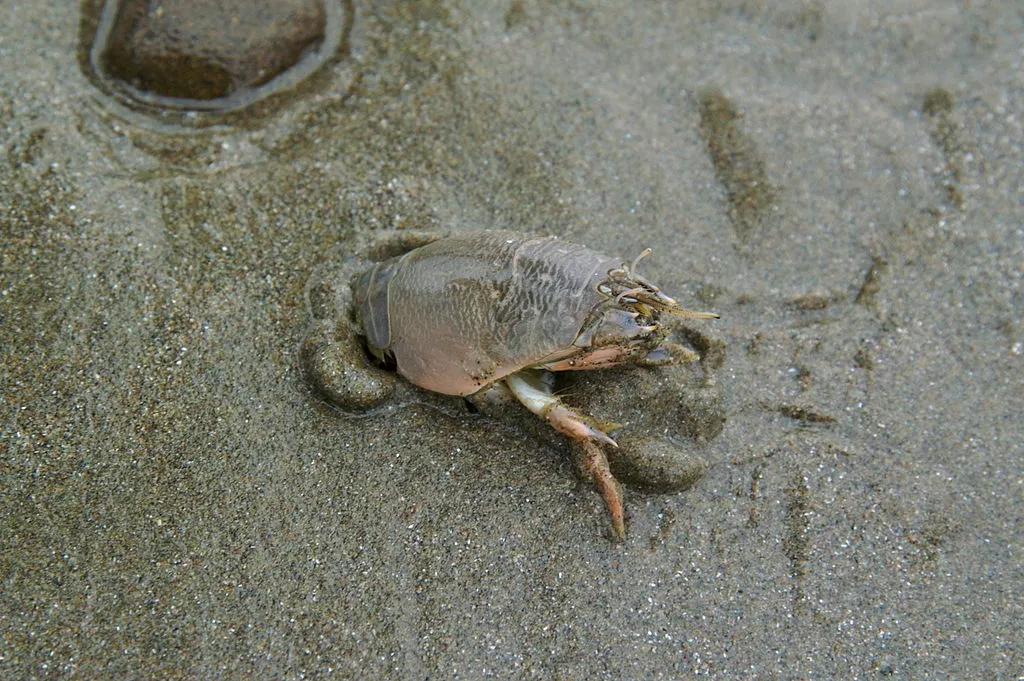The tiny Pacific mole crab (Emerita analoga) has a unique talent, in that it can burrow straight down into the sand using its flexible legs. An experimental new robot copies that capability, and it could actually have some practical applications.
Known as EMBUR (EMerita BUrrowing Robot), the device was developed by a team at the University of California, Berkeley. Like the crab that inspired it, the robot digs vertically through granular media utilizing its anisotropic legs – anisotropy is the property which allows a material to exhibit different characteristics when moving in different directions.
While the crab has 10 legs, EMBUR has just four. As is the case with the crab, the robot digs by alternately sweeping with all of the legs on one side of its body, then all of the legs on the other. On EMBUR, each of those legs takes the form of an extendable metal shaft with a strip of fabric that runs lengthwise along it.

As the leg sweeps away from the robot's body on the "power stroke," it lengthens, drawing the fabric tight – this allows the fabric to act sort of like a basket, collecting and displacing the granular media. When the leg is then pulled back in toward the body, it shortens, causing the fabric to droop and move through the granules instead of collecting them.
By rapidly repeating these actions, EMBUR can bury itself relatively quickly. And all of the openings on the robot's joints are covered in a rubber membrane, which allows them to move freely while keeping granules from getting in and jamming everything up.

Led by Asst. Prof. Hannah Stuart, the scientists are now working on making the robot capable of digging through actual sand and dirt. It is hoped that its descendants could one day be utilized for tasks such as assessing soil at agricultural and construction sites, collecting scientific data from the ocean floor, or even serving as anchors for marine vehicles or spacecraft.
EMBUR can be seen in digging action, in the video below.
Source: UC Berkeley via IEEE Spectrum




